This Sourdough Discard Pie Crust is buttery, tender and impossible to mess up! Butter and sourdough discard impart a rich flavor, and is the perfect base for savory or sweet fillings. I'll share my fool-proof super simple method of nailing an extra-flaky pie crust that will make you look like a pro, even if you're new to baking.
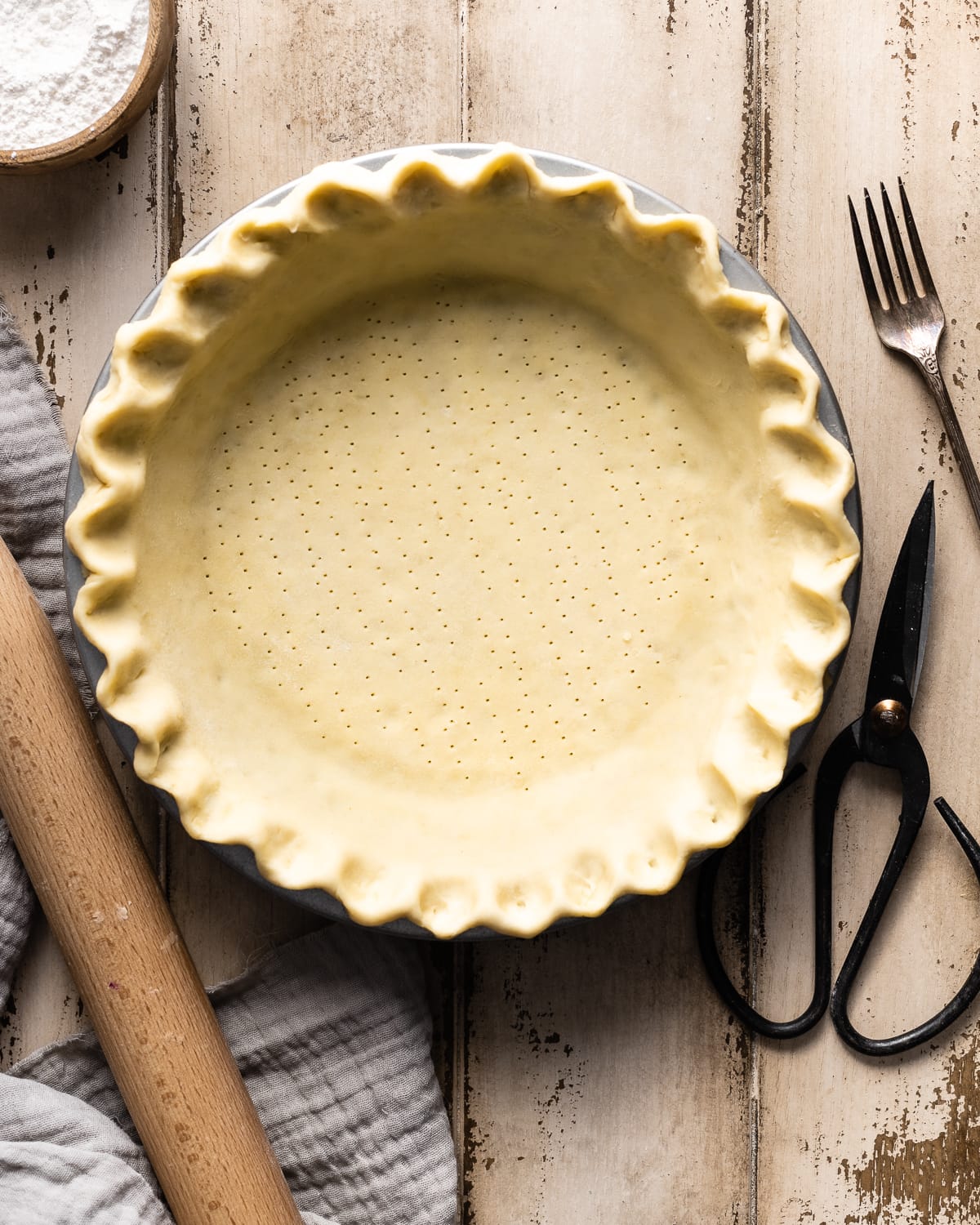
Jump to:
A good pie crust is crispy, flaky and tender yet sturdy enough to stand up to juicy fruit or rich custard fillings without becoming chewy or soggy.
Learning how to make it opens a world of possibilities: sourdough galettes, sourdough mini galettes, sourdough hand pies, sourdough empanadas, sourdough tarts and so much more!
Foolproof flaky pie crust
Pie crust can be difficult to get right. Pastry dough requires delicate handling. As a sourdough baker, I have a tendency to overwork my dough which results in excess gluten development, great for sourdough bread not so for tender pie crust.
I’ve had my share of tough, dry, leathery pie crust with the dreaded soggy bottom. However difficult to achieve, it’s not impossible.
My secret to an ultra flaky pie crust
Multiple failures led to a technique that guarantees success every time: lamination!
If you've ever enjoyed a puff pastry, danish or croissant, you're already familiar with the magic of lamination. However, it wasn't until I read Erin Jeanne McDowell's Book on Pie that I discovered you can use this technique to make extra flaky pie crust as well! She recommended the technique for heavy handed bakers (like me) who struggled with perfecting their pie crust. Since then, I've embraced this method with consistent success!
How lamination works
Here's why it works, folding to creates numerous layers of butter sandwiched between layers of dough. As it bakes, the water content in the butter turns into steam. This steam causes the layers of dough to separate, creating pockets of air and resulting in the characteristic flakiness of a well-made pie crust.
Moreover, laminating the dough promotes gluten development, making it easier to roll out without breaking. However, the butter layers serves as a barrier preventing the adjacent layers of dough from interacting. This safeguard ensures that your pie crust remains tender and avoids becoming tough or chewy. The end result? An extra flaky crust that's practically foolproof!
Baking with Sourdough Discard
When incorporated into buttery pastry, sourdough discard imparts a delicately tangy, almost cheesy flavor that’s not overly savory. Since you won’t use it to make bread rise, you can use unfed sourdough or sourdough discard straight from the refrigerator.
Active sourdough starter will have a milder flavor than discard that’s been kept in the fridge for weeks, both will work but you’ll get slightly different results.
Looking for more ways to use up excess sourdough starter? Check out this list of my favorite Sourdough Discard Recipes.
What You Need

Sourdough discard: Dissolve the sourdough discard completely in water, this makes it easier to incorporate it into your dry ingredients. You can still make this recipe without sourdough discard, just add 28 grams of water and 28 grams if all-purpose flour to the recipe.
All-purpose flour: Low protein flour imparts a tender texture to this crust, another type of flour may require more water. Don’t substitute another type of flour.
TIP: Start with cold butter and ingredients. If your dough is too warm, the butter will melt resulting in a dry, rubbery crust. Starting off with cold pieces of butter and ice cold water will help your chances of success.
Step-by-step Instructions

STEP 1 Make the dough: Dissolve the starter in water (image 1). Rub the butter into the flour and salt using your hands or a pastry blender (image 2). Stir the dissolved starter into the butter and flour mixture (image 3). Gather dough up into a ball turn it out on to a piece of plastic wrap, refrigerate for at least 30 minutes (image 4).
TIP: Don’t be tempted to add too much water. Gluten is activated when water is added to flour. Adding too much results in excess gluten formation and a tough crust. If your dough feels too dry and doesn’t feel like it’s coming together, be conservative and only add a few tablespoons of ice water at a time.

STEP 2 Laminate the dough: Wrap the dough in plastic wrap and flatten it out into a rough rectangle, chill the dough for at least 30 minutes (image 5). Flatten the dough out into a large rectangle about ⅛-inch thick, size doesn't have the be exact. Fold the dough in half(image 6). Fold the dough once more until it's only a quarter it's original size (image 7). Divide the dough in half. Round the dough into two discs. Wrap each portion of dough in plastic wrap and refrigerate for at least 2 hours before using (image 8).
TIP: Lamination is totally optional! If you’re already successful with creating tender pie crusts then you can totally skip this step. After you've gathered the dough, proceed with dividing the dough into 2 portions and chill before using.
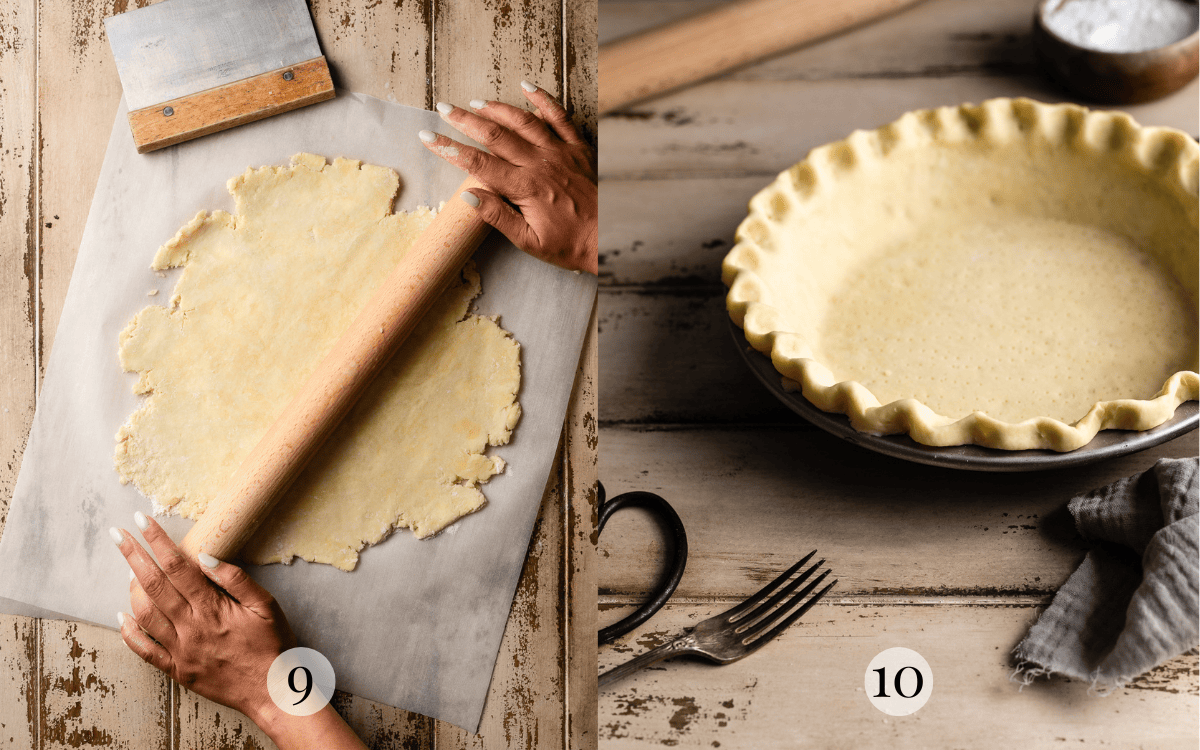
STEP 3 Roll out the dough: Roll out the dough (image 9). Carefully transfer the dough to a pie plate (image 10).
Baker's Tips
Weigh your ingredients: Pie dough relies on precise ratios of flour, fat, and water. Achieving this accuracy is best done by measuring your ingredients by weight, which is more reliable than using volume measurements like cups and tablespoons.
Chill the dough: If your dough starts to feel greasy while you're rolling it out, it means the butter in your dough may be melting. Wrap your dough up and place it in the refrigerator to cool down before you continue to work with it.
Let the dough warm slightly before rolling it out: Take the dough out of the refrigerator and let it warm slightly at room temperature, for about 5 minutes. This will make it easier to roll out and prevent it from cracking.
How to Bake the Crust
Par-baking: Bake the dough at 425 F with pie weights for 20 minutes, remove weights from the bottom crust and continue baking at 375 F for 7 minutes or until the crust is just beginning to brown.
Blind Baking: Bake the dough at 425 F with pie weights for 20 minutes, remove weights and continue baking at 375 F for 7 minutes or until the crust is just beginning to brown.
Baking a Double-crust Pie: Assemble your pie. Bake the pie at 400 F for 40 to 45 minutes or completely browned.
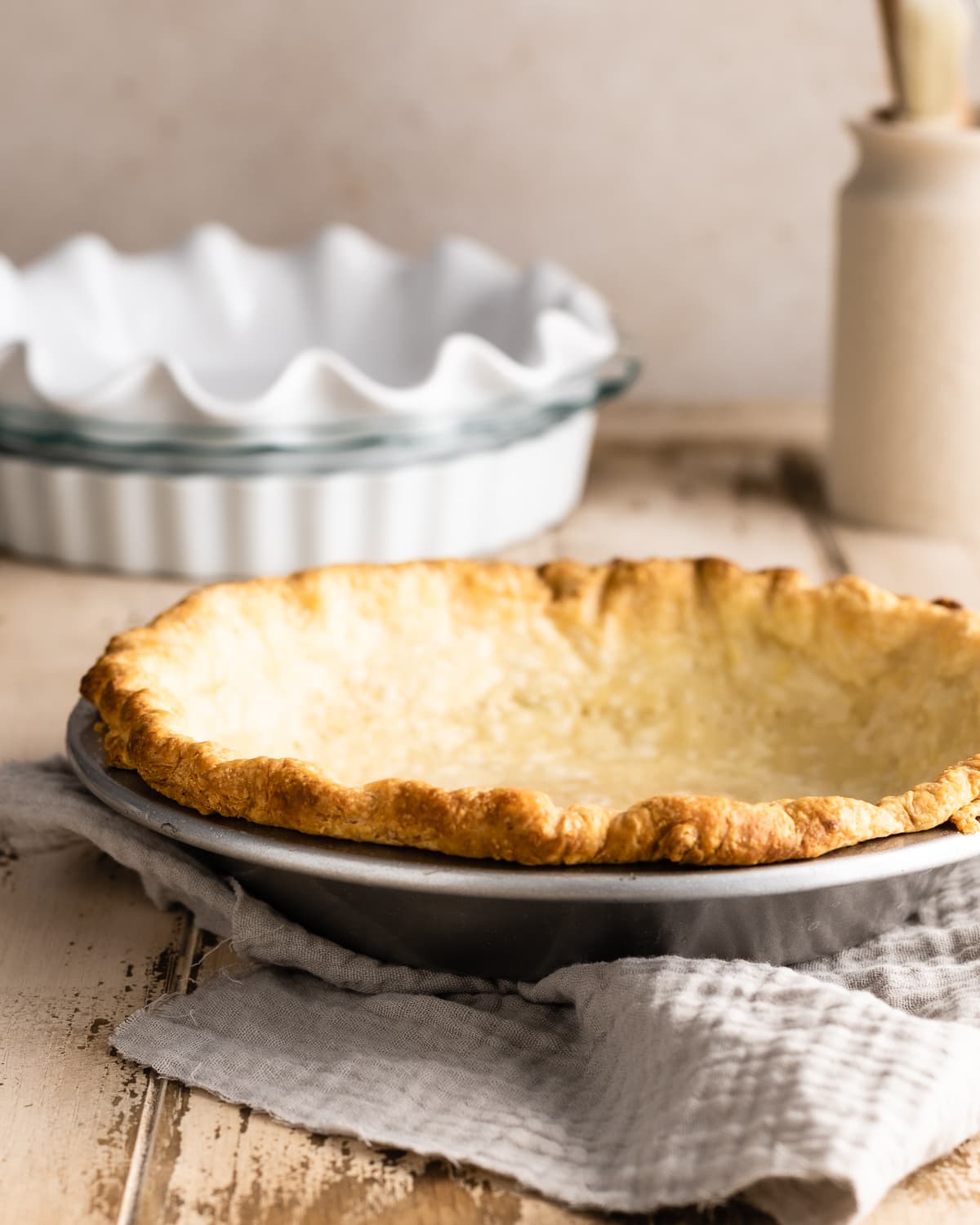
How Much Does This Recipe Make?
This recipe makes enough for:
- 1 double crust pie
- 2 single crust pies
- 1 large galette
- 4 mini galettes
- 1 batch of sourdough turnovers
Now that you’ve perfected your dough skills, try your sourdough pie crust to make Sourdough Apple Pie, Sourdough Pumpkin Pie or Beef Sourdough Empanadas.
Recipe FAQs
You may not have added enough water to your dough. Different brands of flour may absorb water at different rates. The flour you use may need more water. If your dough is crumbly, add water a tablespoon at a time.
If you notice the butter in your dough begin to melt stop working, wrap your dough in plastic wrap and refrigerate it for 30 minutes before continuing.
It depends, most single crust pies, especially custard pies require par-baking since they don't usually bake long enough and at high enough temperature to fully bake and crisp the crust. Double crust pies usually bake for long enough to allow the crust to fully cook and crisp up so they don't need to be par-baked.
Absolutely, this pie crust keeps beautifully in the freezer. After wrapping your discs of dough in plastic wrap, keep them in a ziplock bag and freeze them for up to 3 months.
Let the pie crust defrost in the refrigerator for a day and then let it warm up slightly at room temperature before rolling it out.
More sourdough pastry ideas you may enjoy
Did this recipe rise to the occasion?
★★★★★
Please leave a star rating and a comment. Your feedback helps me create more delicious sourdough recipes. I read and truly appreciate every message.
Don't forget to PIN this recipe on Pinterest to save it for later!
Thank you for your support!
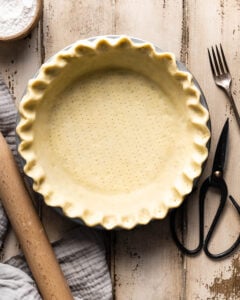
Extra Flaky Sourdough Pie Crust
This section may contain affiliate links
Ingredients
- 226 grams unsalted butter cold
- 56 grams water plus more if needed
- 75 grams sourdough discard
- 270 grams all-purpose flour
- 6 grams salt
Click US Customary to view volume measurements
Instructions
- Prep: Cut the butter into ½ inch cubes. Place them in the refrigerator until ready to use. Stir the sourdough discard in water until almost completely dissolved. Set aside.226 grams unsalted butter, 75 grams sourdough discard, 56 grams water
- Cut the butter into the flour: In a large mixing bowl, toss the butter, salt and all-purpose flour together making sure all the butter pieces are completely coated. Use your fingers to squeeze the butter pieces into flat discs, continue working the butter into the flour by rubbing everything together using your palms.270 grams all-purpose flour, 6 grams salt
- Make the dough: Make a well in the center of your flour mixture and pour the discard mixture in the center. Use a stiff spatula or sturdy wooden spoon to toss the flour and discard mixture together.
- Using your hands, begin lightly kneading and bringing the dough together, until it comes together in a cohesive mass (it’s ok if it looks a little dry). Add more water a tablespoon at a time if the crust is too crumbly.
- Wrap the dough in a piece of plastic wrap and refrigerate for at least 30 minutes.
- Laminate the dough: Unwrap the dough and place it on a clean, floured surface. Dust your rolling pin with flour and flatten the dough out into a large rectangle, about ⅛-inch thick.
- Fold the dough in half, fold it once more, until it's only a quarter it's original size.
- Divide the dough in half.
- Chill: Round the dough into two discs. Wrap each portion of dough in plastic wrap and refrigerate for at least 2 hours before using.
- Roll out the dough: Set the dough out at room temperature for 15 minutes. Unwrap the dough and set it on a lightly-floured surface. Dust your rolling pin in flour. Flatten the dough out into a large circle, perform a quarter turn after each time you pass the rolling pin over the dough. Continue until you've rolled the dough out into your desired size.
- Carefully transfer the dough to a pie plate. Chill the dough covered in plastic wrap and refrigerate for at least 30 minutes before baking.
- To par-bake: Line chilled pie dough with a piece of crumpled parchment paper. Fill with pie weights (see note). Bake at 425 F for 15 minutes. Remove the parchment with pie weights, return the crust to the oven and continue baking at 375 F for 7 to 10 minutes or until the bottom begins to brown.
- To blind bake: Line chilled pie dough with a piece of crumpled parchment paper. Fill with pie weights (see note). Bake at 425 F for 15 minutes. Remove the parchment with pie weights, return the crust to the oven and continue baking at 375 F for 15 to 20 minutes or until the bottom is completely browned.
- To bake a double crust pie: Assemble your pie. Bake the pie at 400 F for 40 to 45 minutes or completely browned.
- Storage: Refrigerate the dough for up to a week or freeze for up to 1 month.
Tips
These recipes were developed and tested using grams for precise measurements. To increase your chances of success, I recommend investing in a kitchen scale. I've included rough volume estimates (in tablespoons and cups), but they might not be totally accurate.
Remember all ovens are unique, these recipes were tested in my oven which runs cooler than others. You might need to lower the temperature if your bake appears to be browning too quickly. Monitor your bake closely and make adjustments if needed.
Notes
Nutrition
I am not a nutritionist or dietitian, any nutrition information provided is an estimate.

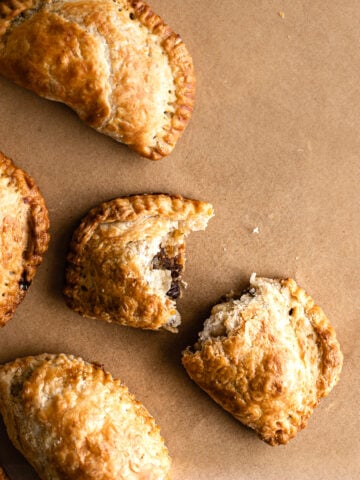
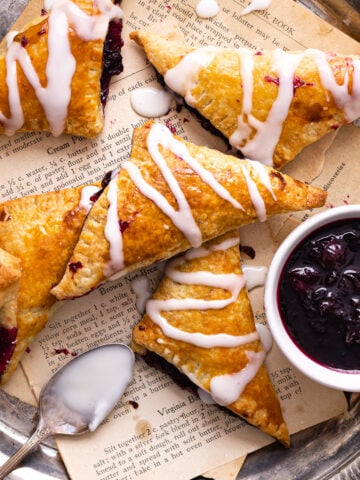
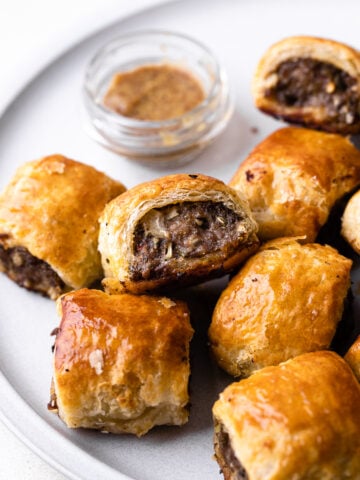
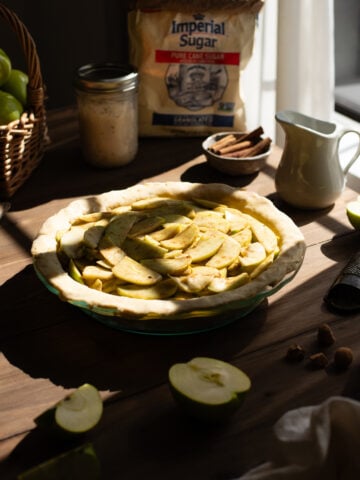
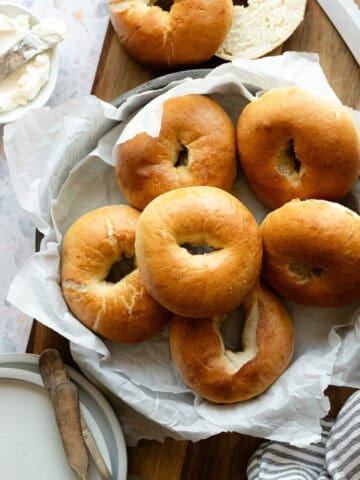
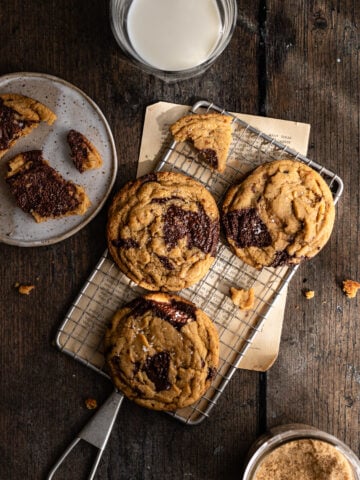
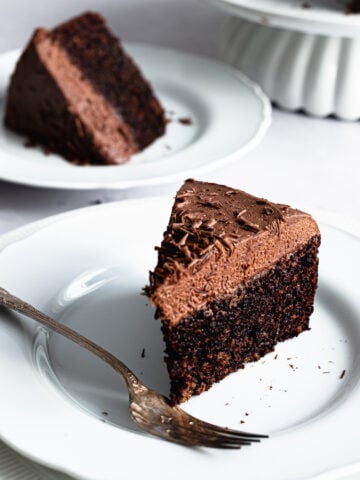
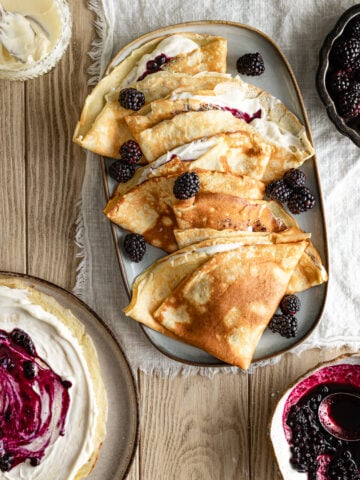
Maggie says
This is my favorite pie crust so far, it really is extra flaky! This recipe compared to others I've tried is a little wetter, which i prefer because it is so much easier to work with, but it also gives me the freedom to use plenty of flour while rolling and laminating. I use it to top my chicken pot pie and it's wonderful. I have a harder time using it for pie crust. I'm making a pumpkin pie right now and blind-baking it. My first thought is that this recipe (and all recipes I've tried) aren't quite big enough. I like the edges to lay flat on my pie pan with the dough doubled over and pinched. I find that if I can't get a good layer folded on top of the pie pan, I have sinking issues. (Maybe my pie pan is bigger than it should be since this is always an issue for me?) So next time I make this recipe, I'm going to make it about 1.25 times bigger so that I have plenty of dough to work with. It will be absolute perfection on the chicken pot pie as is. I cannot wait for dinner!
Hannah Dela Cruz says
So glad you found a way to make it work! Increasing the recipe is probably a good idea!
Nicole says
Best success I’ve had with a pie crust! I’ve used this recipe multiple times for chicken pot pie and quiche. I even froze a ball of crust for about 4 months, thawed in fridge overnight, and just made a perfect crust with it this morning. So good and flaky
Hannah Dela Cruz says
Thanks for your feedback! I love that this has helped you make delicious pies.
Crystal says
I made this pie crust for a chicken pot pie and it was delicious. I had to add 3-4 tablespoons of flour more in step 4 because it the dough was so wet, it was impossible to knead. The bottom crust was a little underdone and since my oven is a new convection oven, I think I need to lower the temperature. Next time I will try baking 350°F for 45-50 minutes to see if that works.
Hannah Dela Cruz says
Hi Crystal, thank you so much for your feedback! I'm glad the pie crust still turned out delicious despite some setbacks!
Denise says
amazing! best pie crust I've ever made and tasted. unbelievably flaky crust. thank you so much
Hannah Dela Cruz says
You're so welcome. So happy you loved the recipe!
Brenda says
I am 81 years old and have finally learned how to make a really flaky pie crust! Thank you for this recipe! I made some hand pies with it and they were absolutely delicious!!!!
Talene Manahan says
I’ve made pie crust a few times before, but went back to store bought because I didn’t think my efforts were worth the extra work. I saw recipes for pie crust with discard a while back when I was looking for ways to use the discard rather than throw it away. I had some apples that were about to be past their prime so I decided to give this recipe a try. I halved the recipe since I was making two individual Dutch apple mini pies in some oven safe small ceramic crocks. I chose to laminate in hopes of a flaky crust. Wow! Thank you for sharing this recipe. I don’t think I’ll be buying my crusts anymore. I was impressed with how it turned out, and unlike the store bought that I have to cover part way through baking because they tend to burn, this crust was beautiful even with the extended bake time to fully cook the apples. This crust recipe makes a crust with wonderful texture and flavor!
Hannah Dela Cruz says
Thank you so much for sharing your experience with this recipe! I had the same history with pie crusts and lamination also made a world of difference for me. Glad this recipe changed your relationship with pie crusts they are so worth the effort.
Abby says
Hey I was just wondering if I could freeze the pie crust for future use and If so at what stage would i? thx😁
Hannah @ Make It Dough says
absolutely! you can freeze the crusts after you've separated them into 2 discs. wrap them tightly in plastic wrap and they will keep well for up to 2 months.